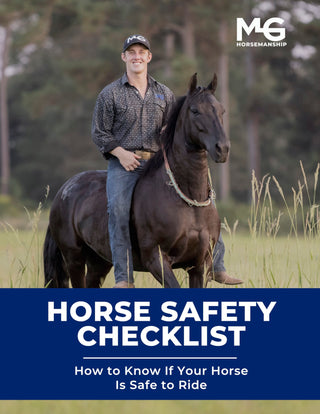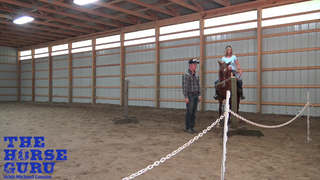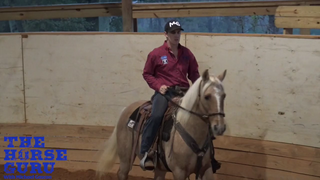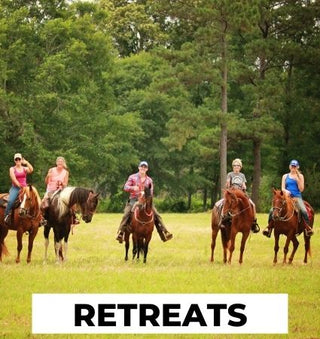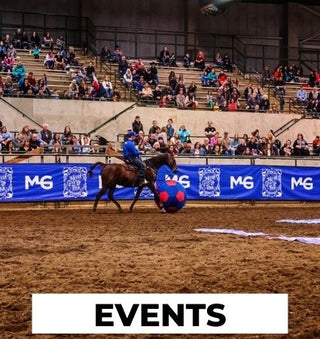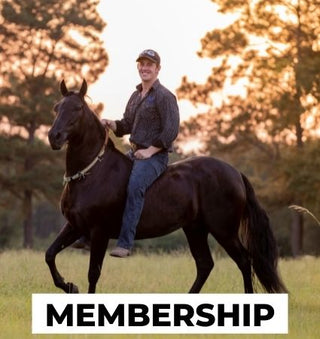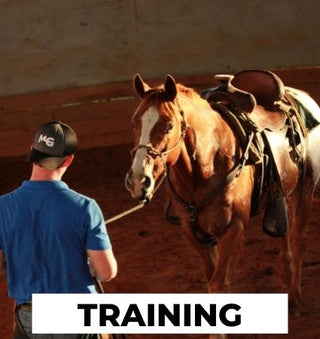Watch the Video Here or continue reading below!
When working with a green horse, navigating new obstacles such as stairs and bridges can be a daunting yet rewarding experience. Michael Gascon, a seasoned horse trainer, demonstrates the importance of patience, technique, and proper body positioning when introducing a horse to these challenges. In this post, we’ll walk through key strategies to help you and your horse successfully conquer stairs and bridges.
Introducing Stairs to a Green Horse
Building Confidence with Every Step
In the video, Michael Gascon introduces Bart, a 30-day under-saddle gelding, to stairs for the first time. When a horse is presented with an unfamiliar obstacle like stairs, it’s common for them to hesitate, try to refuse, or resist movement. Michael explains the importance of giving the horse the freedom and opportunity to approach the stairs at their own pace.
-
Step-by-Step Approach: As Bart approaches the stairs, he attempts to resist. He initially tries to move to the right and then the left, demonstrating typical hesitation behavior. The key here is to guide the horse gently, maintaining control without forcing the animal to make a decision too quickly.
-
Reinforcing Positive Movement: The release comes when the horse tries, even if it’s hesitant. By rewarding attempts and creating a calm, encouraging environment, the horse learns that attempting is the right choice.
The Right Positioning for Stairs
Setting Your Horse Up for Success
Once your horse is approaching the stairs, proper positioning is critical to maintain balance and comfort. Michael emphasizes several key points to ensure both the rider and horse are set up for success:
-
Body Positioning: As you approach the stairs, sit back and look up. This positioning helps keep your balance in check and prevents you from being thrown forward during the descent.
-
Heels Down: Make sure your heels are down and your shoulders are back. This will help you maintain a stable position and avoid leaning forward, which can be uncomfortable for both you and your horse.
-
Loose Reins: As the horse moves up or down the stairs, give them a loose rein. This allows them the freedom to move naturally and keeps them from feeling constrained or pressured.
Descending Stairs: The Importance of Seat and Stirrups
Keeping Your Balance on Steep Terrain
When descending stairs or navigating any downhill terrain, it’s important to adjust your position to maintain balance and ensure the horse doesn’t get caught off-guard. Michael highlights that when a horse lands on its front feet, it’s crucial for the rider to have their feet positioned correctly to absorb the movement.
-
Feet Positioning: When descending, make sure your feet are well in front of you. This positioning ensures that the horse’s weight is shifted into your stirrups, preventing you from being pushed forward onto the horse’s neck.
-
Absorbing the Impact: As the horse lands on its front feet after stepping down, your stirrups should absorb the impact. This will help you stay seated without being jolted forward.
Why Looking Up Makes a Difference
Visual Focus for Rider and Horse
An often-overlooked aspect of riding on stairs and bridges is where you direct your gaze. Michael emphasizes that looking up, not down, is crucial for maintaining your posture and guiding your horse effectively.
-
Keeping Your Head Up: By looking up, you maintain an open and relaxed posture. This helps keep your shoulders back and your body in the correct position, which directly influences your horse’s behavior.
-
Directing the Horse’s Focus: Just as your body language influences your horse, your gaze can help guide them through challenging obstacles like stairs or bridges. A calm, confident rider is more likely to have a calm, confident horse.
Tips for Success with Stairs and Bridges
Quick Tips for a Smooth Experience
If you’re planning to introduce your horse to stairs or bridges, here are some essential tips to ensure success:
-
Take it Slow: Don’t rush the process. Give your horse time to process each step and allow them to approach the stairs at their own pace.
-
Patience is Key: If your horse hesitates, don’t force the issue. Gently guide them and reward them for attempting, even if they are unsure.
-
Focus on Body Positioning: Keep your heels down, shoulders back, and head up. Your body language will significantly impact your horse’s confidence and behavior.
-
Reward Small Wins: Each time your horse makes progress, whether it’s taking a step forward or simply relaxing at the top, reward them with praise or a loose rein.
Final Thoughts: Success in Simplicity
Michael Gascon concludes with a simple but effective message: keep it straightforward and calm. When you approach obstacles like stairs or bridges with a clear, confident mindset, your horse is more likely to follow suit. By focusing on body positioning, giving your horse space, and maintaining patience, you’ll find success in building your horse’s confidence, no matter the challenge.
Conclusion
Navigating stairs and bridges with a green horse may seem intimidating, but with the right approach, it becomes an invaluable training exercise. Michael Gascon’s expert techniques for handling a horse’s first steps on stairs emphasize the importance of patience, proper positioning, and rewarding effort. With these tips in mind, you can help your horse develop the confidence and skills necessary for overcoming even the trickiest obstacles.



